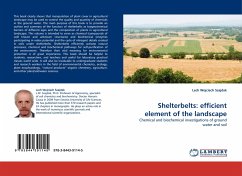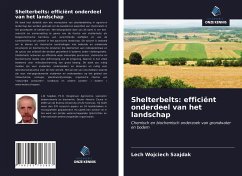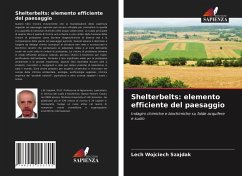
Shelterbelts: efficient element of the landscape
Chemical and biochemical investigations of ground water and soil
Versandkostenfrei!
Versandfertig in 6-10 Tagen
32,99 €
inkl. MwSt.

PAYBACK Punkte
16 °P sammeln!
This book clearly shows that manipulation of plant cover in agricultural landscape may be used to control the quality and quantity of chemicals in the ground water. The main purpose of this book is to provide an outline and summary of the function of shelterbelts as biogeochemical barriers of different ages and the composition of plants in agricultural landscape. This volume is intended to serve as chemical (compounds of well known and unknown structures) and biochemical (enzymes participating in redox potential and the cycle of nitrogen) details created in soils under shelterbelts. Shelterbel...
This book clearly shows that manipulation of plant cover in agricultural landscape may be used to control the quality and quantity of chemicals in the ground water. The main purpose of this book is to provide an outline and summary of the function of shelterbelts as biogeochemical barriers of different ages and the composition of plants in agricultural landscape. This volume is intended to serve as chemical (compounds of well known and unknown structures) and biochemical (enzymes participating in redox potential and the cycle of nitrogen) details created in soils under shelterbelts. Shelterbelts efficiently activate natural processes, chemical and biochemical pathways for self-purification of the environment. Therefore their vital meaning for environmental protection is of great importance. This book should be helpful to students, researchers, and teachers and useful for laboratory practical classes world wide. It will also be invaluable to undergraduate students and research workers in the field of environmental chemistry, ecology, plant ecophysiology, natural products organic chemistry, agriculture, and other plant/soil/water sciences.












